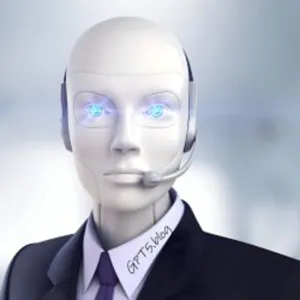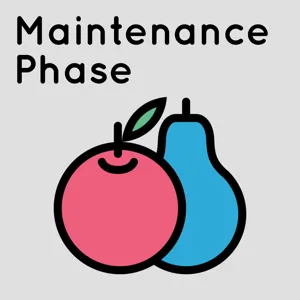Podcast Summary
Understanding physical processes and practical applications through mathematical approaches: Mathematical study of partial differential equations aids in understanding physical phenomena and has practical applications in fields like image processing and restoration.
Mathematical approaches, specifically the study of partial differential equations, play a crucial role in both understanding physical processes, such as the separation and coarsening of alloys, and in practical applications, like image processing and restoration. Corolla Schonleb, an applied mathematician at the University of Cambridge, began her research in mathematics focusing on partial differential equations and their applications. Her early work analyzed the stability of solutions to the Kanhila equation, which models phase separation and coarsening in alloys. However, researchers at UCLA later applied the same equation to image restoration, demonstrating the versatility and applicability of mathematical approaches to various fields. This interplay between mathematical theory and practical applications highlights the importance of a multidisciplinary approach to problem-solving and innovation.
Reconstructing images from transforms: Inverse imaging problems involve reconstructing original images from their transforms, such as the Radon transform in computer tomography, using mathematical methods like differential equations.
The field of image processing and reconstruction, particularly in biomedical applications, involves dealing with data that is not directly an image but rather a transform of an image. This is known as inverse imaging problems, and it's a much more complex issue than traditional image restoration. For instance, in computer tomography, what is measured are not the actual images but the Radon transform of the images, which are line integrals over the image density. The challenge lies in reconstructing the original image from these line integrals, as not all possible line integrals can be measured due to practical limitations such as radiation exposure. This is a much more complex problem than content-aware fill in Photoshop and predates its development. It is based on mathematical research, specifically differential equations, and has been a long-standing problem in the field, dating back to the work of Radon.
Maintaining image integrity during denoising: Denoising techniques like total variation and median filtering help preserve important image features, such as edges, while reducing noise.
When dealing with limited data and noisy measurements in image reconstruction, denoising is an essential step to preserve important features such as edges. Traditional denoising methods, like Fourier techniques, can smooth out noise but also eliminate high frequencies that correspond to edges. To address this issue, researchers have developed techniques like total variation denoising and median filtering, which can differentiate between noise and important high-frequency components, specifically edges. These methods help maintain the integrity of the image while reducing noise. In contrast, in image editing software like Photoshop, the goal is often to blur edges to make manipulated images appear more natural.
Handcrafted image denoising algorithms vs deep neural networks: Handcrafted models still hold value despite being surpassed by neural networks in performance due to the vast computational power required for neural networks. Neural networks offer opportunities for mathematicians to explore image processing complexities but come with their own challenges and unknowns, including adversarial errors.
While handcrafted image denoising algorithms have their merits, particularly in specific scenarios and when dealing with certain types of images, they are being surpassed in performance by deep neural networks in many cases. However, handcrafted models still hold value due to the vast amount of computational power required to train machines to learn everything about the world. Moreover, the type of image produced by different scanners, such as CT or MRI, can vary significantly depending on factors like the number of x-rays used and the manufacturer of the scanner. These differences can cause algorithms trained on one scanner to fail when applied to images from another scanner. Neural networks offer exciting opportunities for mathematicians to go beyond simplistic image processing tasks and explore the complexities of these algorithms, but they also come with their own unknowns and challenges. The discussion also touched upon the concept of adversarial errors, where small perturbations in images can lead to drastic misclassifications, highlighting the importance of understanding these nuances in image processing.
Combining handcrafted models and neural networks: By integrating handcrafted models and neural networks, researchers can create machine learning algorithms that are both powerful and interpretable, enabling better understanding and trust of results.
Combining the strengths of handcrafted models and neural networks can lead to better understanding and interpretation of machine learning algorithms. Handcrafted models, which are based on hypotheses and mathematical algorithms, provide interpretability and guarantees on solutions. However, they may lack flexibility and adaptability. Neural networks, on the other hand, have the ability to learn complex patterns from data but can be difficult to interpret due to their large number of parameters. To bridge this gap, researchers are exploring ways to bring structure and interpretability to neural networks. This involves reducing the search space and making statements about stability and algorithmic behavior. By doing so, researchers can understand why things are happening and interpret the results of neural networks. One approach to achieving this is through bilevel optimization or parameter estimation, where handcrafted models are used as a base and their parameters are learned from actual examples. This results in a handcrafted model that is still interpretable and provides guarantees on solutions. Researchers are currently exploring different ways to integrate handcrafted models and neural networks, with some focusing on specific applications and others on more general approaches. The ultimate goal is to create machine learning algorithms that are both powerful and interpretable, enabling us to better understand and trust the results they produce.
Combining handcrafted models with deep learning in medical imaging: Neural networks optimize large datasets by randomly selecting variables to update, allowing for effective processing and approximate loss minimization.
Combining handcrafted models with deep neural networks in computer tomography and MRI reconstruction involves feeding neural networks with more information than just the original source material. This is done in a sequential manner to adapt the objective towards the larger dataset. However, neural networks don't necessarily need to minimize their loss exactly for the training examples, as they're only an approximation of many more images. Stochastic optimization methods are used instead, which randomly select a certain amount of variables to optimize in each sweep through the network. This approach allows neural networks to work effectively with large datasets while minimizing the loss only approximately.
Minimizing difference between denoised image and ground truth for a wide range of images: Striving for an approximate solution to minimize the difference between denoised images and ground truth images for various applications, such as medical imaging and chemical engineering, despite limited data availability.
In image denoising using neural networks, the goal is to minimize the difference between the denoised image and the ground truth (clean) image, not just for the training set, but ideally for an infinite number of images. However, since we don't have all infinite images, we aim for an approximate solution to generalize better to a wider range of images. This approach allows for potential applications in various fields, such as medical imaging and chemical engineering, where dealing with limited data and dynamic processes is common. My research collaborations include academics from hospitals and other disciplines, focusing on improving image quality from limited data, particularly in magnetic resonance tomography and chemical engineering.
Processing high-resolution data in real-time for medical imaging and other applications: Real-time processing of high-resolution data is crucial for medical imaging and other fields, but poses challenges due to limited data and high requirements. Applications include monitoring changes over time, creating 3D models, and identifying anomalies. Ethical concerns arise in areas like security and privacy.
Acquiring high-resolution data in real-time, especially when dealing with moving objects or complex spectral data, poses significant challenges. In the context of medical imaging, this means having less data to work with for each timestamp, limiting the ability to measure and reconstruct detailed images. However, the goal is often not just to reconstruct one image but to monitor changes over time, adding to the complexity. Beyond medical applications, researchers in plant sciences use aerial imaging data, including photographs, hyperspectral imaging, and LiDAR, to create 3D models of trees and monitor forest health. Hyperspectral imaging provides detailed spectral information about materials, allowing for identification of invasive tree species or other anomalies. The challenges of working with limited data and high-resolution requirements extend to other fields, such as denoising camera footage for security purposes. While technology like LiDAR can offer significant time savings compared to traditional methods, it also raises ethical concerns regarding privacy and surveillance. Overall, the ability to process and make sense of complex data in real-time is a crucial area of ongoing research.
Exploring Art and Restoration with Technology: Technology enables virtual restorations of fragile art pieces, allowing exploration of different possibilities without damaging originals, enhancing appreciation and learning.
Technology is pushing the boundaries of what is possible in the realm of art and restoration. The speaker shares an example of a researcher in Montreal who allegedly used spectral photography to find 500-year-old fingerprints, leading to a controversy over authenticity. In academia, there is a growing interest in using technology to create virtual restorations of fragile art pieces, such as illuminated manuscripts, without physically altering them. This was demonstrated in an exhibition at the Fitzwilliam Museum in Cambridge, where a page of an illuminated manuscript with over-paint was displayed next to its virtual restoration. By using technology to create virtual restorations, we can explore different possibilities without damaging the original pieces, allowing us to appreciate and learn from them in new ways.
Exploring the depths of image restoration: To delve into image restoration, start with a strong foundation in image processing, learn from renowned researchers, and explore introductory books.
Delving into the field of image restoration goes beyond just restoring an image to its original state. Instead, it involves peeling back the layers of painted-over images to uncover their original vitality and true colors. This intriguing process requires a solid foundation in image processing, particularly mathematical approaches. For those interested in pursuing this field, a good starting point would be to explore resources from universities with renowned image processing research programs, such as UCLA. Faculty members like Stan Osher, Andrea Vidali, Malik Perona, and Stefano Suato have made significant contributions to the field. Additionally, introductory books on image processing can provide valuable foundational knowledge. By immersing yourself in these resources, you'll be well on your way to understanding the latest research and advancements in this fascinating field. Remember, the journey to uncovering an image's true essence begins with a strong foundation in image processing fundamentals.





